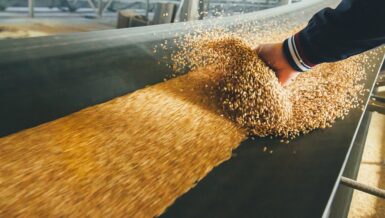Cocoa nibs contain a health-benefit component named as flavonoids, which provides antioxidant effects. Cocoa processing has two aims: (1) Transferring cocoa nibs into milder tasting granules. (2) Applying coating on granules to prevent flavonoids from oxidization upon exposure to air.
Delft Solids Solutions has successfully achieved these aims by combining the following Powder Processing steps:
Cryogenic milling: for micronizing cocoa nibs
Cryogenic milling is perfect on micronizing a wide range of heat-sensitive materials in the food industry. Delft Solids Solutions has further optimized the particular cryogenic milling process by using liquid nitrogen with a specific sieving fraction of the cocoa nibs. This has resulted in a perfect balance between the grinding yield and the particle size, while the powder quality has been preserved. The cryogenic milling is proven as a reliable process with a narrow particle size distribution for cocoa powder.
Mixing for alkalizing and homogenizing cocoa powder
To alkalize and homogenize cocoa powder, we have further optimized the mixing process. The results obtained in a small bench-top high-shear mixer indicate a highly homo- geneous mixture with adequately alkalized cocoa powder.
The high-quality mixture consists of a homogenous powder with a narrow particle size distribution, resulting in ideal binder dispersion property for further processing. The homogeneity of the mixture is acquired from top to bottom in each batch. The high-shear mixing has an extra benefit in breaking down all unwanted agglomeration under an over-moisturized and alkalized environment. The high-shear mixing typically requires less time than the traditional mixing, which is beneficial for suppressing the oxidation of the flavonoids.
Granulation for agglomeration of cocoa-based mixtures
Cocoa-based powder mixtures consist of cocoa powder, sugar and an alkalizing component. Sugar acts as a sweetness enhancer and binder. The granulation process takes place in the high shear granulator, a unique device equipped with chopper, impeller and controlled water dosing system. The design comprises a flexible mixing chamber that is also used for the mixing process. Combining two processes can minimize the attrition and powder segregation from charge/ discharge actions.
The granulation process can be optimized by changing various process parameters such as impeller speed, chopper speed, binder percentage and process time. The various parameters enabled us to adapt the process to the quality required for each different application. The granules formed can be customized by size and density.
Besides easier handling, the additional advantages of granulation are that it reduces the dustiness potential for dusty materials in order to control explosion levels and it suppresses segregation.
Coating for protecting flavonoids from oxidization
Shear-thinning syrup is used as a coating layer for the cocoa granules. The coa-ting process is exe- cuted in a coating pan equipped with an adjustable drying system and dosing system for heat-sensitive products like cocoa.
The coating process was optimized by changing various process parameters such as coating concentration, dosing rate, the rotation speed of the pan and process time. The coating process can be used for different applications with different coating materials in order to get the perfect coating layer.














































